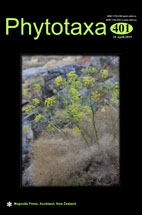Abstract
In 2017, a new fungal species, Alternaria hydrangeae, was isolated from necrotic leaf spots of Hydrangea paniculata in Shenyang Botanical Garden, Liaoning, China. Phylogenetic analyses based on five genes (ITS, GPDH, Alt a1, RPB2 and TEF1) indicated that the species is a new taxon closely related to Alternaria deserticola in section Porri. Both species were significantly different from each other based on cultural features on SNA and PCA. Previously, A. deserticola was morphologically considered as A. acalyphicola. With respect to conidial characters, the species was distinct from A. acalyphicola in conidia shape, size and transverse septa. Pathogenicity tests indicated that it could induce necrotic symptoms on its host. The species is illustrated here as a new one causing leaf spot on H. paniculata.

